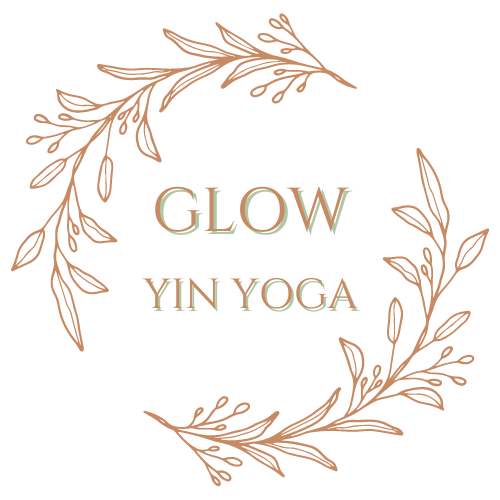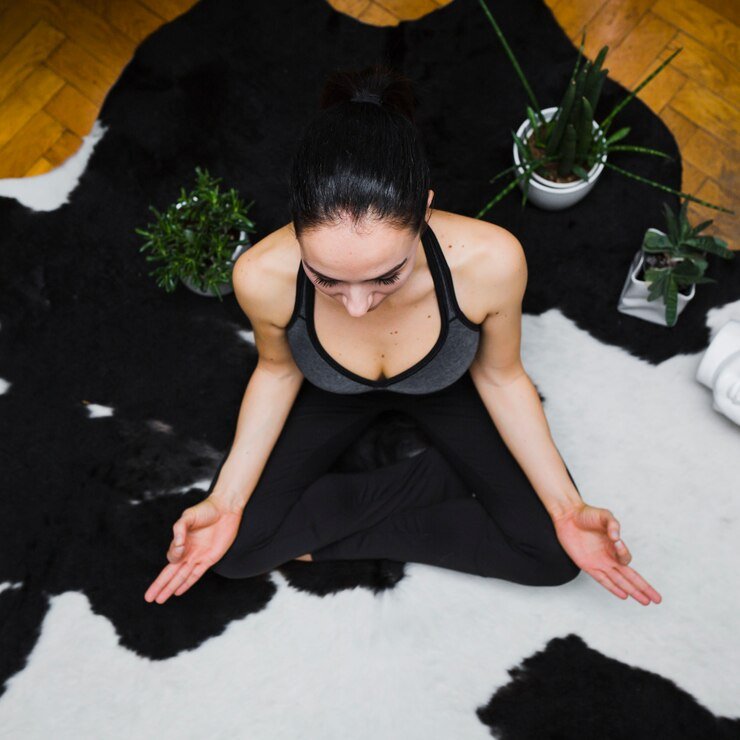What is Yin Yoga?
Yin Yoga is a unique and profound style of yoga that focuses on the deeper connective tissues of the body, such as the ligaments, tendons, and fascia. Unlike more dynamic yoga practices that emphasize strength and flexibility, Yin Yoga aims to cultivate a meditative and introspective practice through long-held, passive postures. This style of yoga was developed by Paulie Zink in the 1970s and later popularized by teachers such as Sarah Powers and Bernie Clark.
The essence of Yin Yoga lies in its approach to creating a balance between the active and passive elements of yoga practice. While many forms of yoga, like Vinyasa or Ashtanga, work primarily with the muscles (the Yang tissues), Yin Yoga targets the deeper, less elastic tissues (the Yin tissues). This helps in increasing circulation in the joints and improving flexibility.
History and Philosophy of Yin Yoga
Origins and Evolution
Yin Yoga’s roots can be traced back to ancient Chinese Taoist practices and traditional Chinese medicine. It draws inspiration from the concept of Yin and Yang, two complementary forces that represent balance and harmony in the universe. Yin is characterized by qualities such as stillness, receptivity, and passivity, while Yang represents activity, dynamism, and movement.
Paulie Zink, a martial artist and Taoist yogi, began developing Yin Yoga as a way to complement his more active martial arts training. He integrated principles from Taoist philosophy and traditional Chinese medicine into his practice, creating a system that focuses on long-held postures and deep stretches to target the connective tissues.
Philosophical Foundations
Yin Yoga is deeply rooted in the philosophy of Taoism, which emphasizes living in harmony with the natural flow of life. This philosophy teaches that balance between Yin and Yang is essential for overall well-being. In Yin Yoga, this balance is sought through the practice of stillness and introspection. The practice encourages practitioners to connect with their inner selves, cultivate mindfulness, and embrace a slower, more meditative approach to yoga.
The Practice of Yin Yoga
Postures and Techniques
In Yin Yoga, postures are typically held for longer periods, ranging from 1 to 5 minutes or more. This extended duration allows the practitioner to access and stretch the deeper connective tissues. The postures are generally performed on the floor and are supported by props such as bolsters, blankets, and blocks to ensure comfort and stability.
Common Yin Yoga postures include:
- Butterfly Pose (Baddha Konasana): A seated posture where the soles of the feet are brought together and the knees are gently pressed towards the floor. This pose targets the inner thighs and groin.
- Child’s Pose (Balasana): A resting pose where the practitioner kneels on the floor and folds forward, resting the forehead on the mat and extending the arms forward or by the sides. This pose stretches the back and hips.
- Dragon Pose: A low lunge position where one leg is extended back and the other is bent forward. This pose targets the hip flexors and quadriceps.
- Sphinx Pose: A prone pose where the forearms are placed on the floor and the chest is lifted. This pose targets the lower back and the front of the body.
Breath and Mindfulness
Breathing plays a crucial role in Yin Yoga. Practitioners are encouraged to maintain a steady, relaxed breath throughout the practice. The breath helps to release tension, deepen the stretch, and facilitate relaxation. Yin Yoga also emphasizes mindfulness and self-awareness, inviting practitioners to observe their physical sensations, thoughts, and emotions without judgment.
Finding Stillness
A key aspect of Yin Yoga is the cultivation of stillness, both physically and mentally. By holding postures for extended periods, practitioners are encouraged to find a sense of calm and tranquility. This stillness allows for a deeper exploration of the body and mind, fostering a greater connection to one’s inner self.
Benefits of Yin Yoga
Physical Benefits
Yin Yoga offers numerous physical benefits, including:
- Improved Flexibility: By targeting the connective tissues, Yin Yoga helps to increase joint mobility and overall flexibility.
- Increased Circulation: Long-held postures improve blood flow to the joints and connective tissues, promoting better circulation and overall joint health.
- Enhanced Joint Health: The practice helps to maintain the health and flexibility of the joints by gently stretching and nourishing the connective tissues.
- Reduced Muscle Tension: Yin Yoga releases tension stored in the muscles, promoting relaxation and reducing muscle stiffness.
Mental and Emotional Benefits
In addition to its physical benefits, Yin Yoga offers significant mental and emotional advantages:
- Stress Reduction: The meditative nature of Yin Yoga helps to calm the mind and reduce stress, promoting a sense of relaxation and well-being.
- Enhanced Mindfulness: The practice encourages mindfulness and self-awareness, allowing practitioners to connect with their inner thoughts and emotions.
- Improved Emotional Balance: Yin Yoga helps to release emotional tension and cultivate a sense of inner peace and emotional balance.
- Increased Patience: The practice of holding postures for extended periods teaches patience and persistence, both on and off the mat.
Integrating Yin Yoga into Your Routine
Combining with Other Yoga Styles
Yin Yoga can be a valuable complement to more active yoga styles such as Vinyasa or Ashtanga. Incorporating Yin Yoga into your routine can help balance the dynamic, yang qualities of these practices with the passive, yin qualities of Yin Yoga. This combination promotes overall well-being and a more holistic approach to yoga.
Setting Up Your Practice Space
Creating a comfortable and supportive practice space is essential for a successful Yin Yoga practice. Consider using props such as bolsters, blankets, and blocks to support your body in the postures. Dim the lights, play soothing music, and create a calming atmosphere to enhance your practice.
Developing a Personal Practice
Developing a personal Yin Yoga practice involves setting aside time each week to focus on the practice. Start with a few key postures and gradually build your practice over time. Listen to your body, honor your limitations, and explore the practice at your own pace.
Common Misconceptions About Yin Yoga
Yin Yoga vs. Restorative Yoga
While both Yin Yoga and Restorative Yoga focus on relaxation and deep stretching, they are distinct practices. Yin Yoga involves holding postures for longer periods to target the connective tissues, while Restorative Yoga uses props to support the body in gentle, passive postures. Both practices offer valuable benefits, but they differ in their approach and focus.
Yin Yoga and Flexibility
A common misconception is that Yin Yoga is only for individuals who are already flexible. In reality, Yin Yoga is accessible to practitioners of all levels and abilities. The practice encourages gradual, mindful stretching and can be adapted to suit individual needs and limitations.
The Role of Pain in Yin Yoga
Yin Yoga should not be painful. While some discomfort is normal, especially when stretching deeply, pain is a sign that you may be pushing too hard. It is important to listen to your body and practice within your comfort zone. Using props and modifying postures can help alleviate discomfort and ensure a safe practice.
Yin Yoga for Different Populations
Beginners
Yin Yoga is suitable for beginners due to its gentle and accessible nature. New practitioners can benefit from the practice’s focus on relaxation, mindfulness, and deep stretching. Starting with shorter sessions and gradually increasing the duration can help beginners ease into the practice.
Advanced Practitioners
For advanced practitioners, Yin Yoga offers an opportunity to deepen their practice and explore new aspects of flexibility and mindfulness. Advanced practitioners can incorporate more complex postures and longer holds into their practice, challenging themselves in new ways.
Seniors
Yin Yoga is an excellent option for seniors seeking a gentle and restorative practice. The slow pace and use of props make it suitable for individuals with limited mobility or joint issues. Practicing Yin Yoga can help improve flexibility, balance, and overall well-being in older adults.
Athletes
Athletes can benefit from Yin Yoga as a complement to their training regimen. The practice helps to improve flexibility, release muscle tension, and enhance recovery. Incorporating Yin Yoga into an athlete’s routine can promote overall balance and prevent injuries.
Conclusion
Yin Yoga is a powerful and transformative practice that offers numerous physical, mental, and emotional benefits. By focusing on long-held, passive postures and cultivating stillness, Yin Yoga provides a unique opportunity to connect with the deeper layers of the body and mind. Whether you are a beginner or an experienced practitioner, Yin Yoga can enhance your overall well-being and support a balanced, holistic approach to yoga. Embrace the practice with patience and curiosity, and explore the profound benefits it has to offer.
Get in Touch
200-Hour Yin Yoga Training | Yin Yoga TTC | 200 Hour Yin Yoga Teacher Training Course | Yin Yoga | Yin Yoga Retreats | Yin Yoga Teacher Training Course

